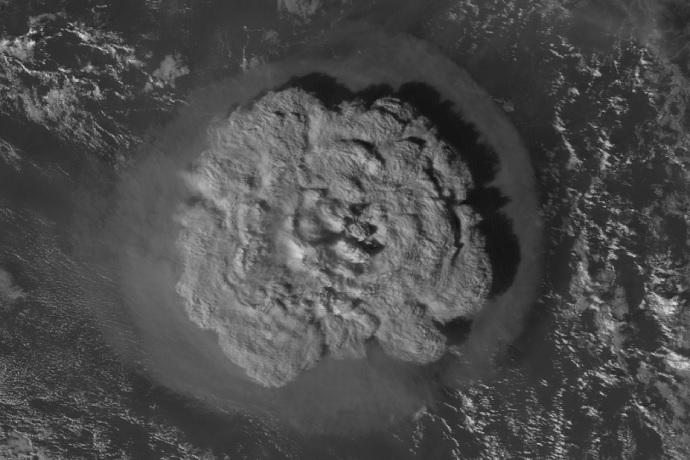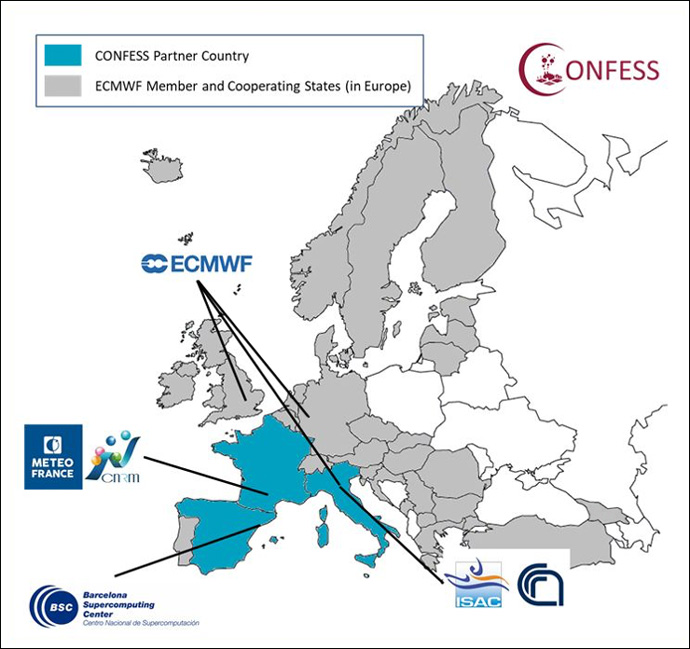

Image: Akacin Phonsawat/iStock/Getty Images Plus
An EU-funded research project aims to improve the services provided by the Copernicus Climate Change Service (C3S) run by ECMWF for the European Commission. The CONFESS project started in November 2020 and will continue until October 2023.
CONFESS will contribute to development of the next C3S reanalysis, ERA6, and of C3S seasonal forecast products. Reanalyses are the backbone of C3S climate monitoring activities. They are global datasets describing the recent history of the atmosphere, land surface, and oceans.
ECMWF uses its forecast model and data assimilation system to compile such data. Reanalyses are also key for the calibration of climate forecasts seasons and decades ahead.
The CONFESS project aims to include time variations of land cover and vegetation in the model used for ERA6 and in seasonal forecasts, which is expected to improve the quality of climate information provided by C3S.
A new representation of aerosols will also feed into ERA6 and seasonal forecasts. This will be partly based on datasets of the Copernicus Atmosphere Monitoring Service (CAMS) run by ECMWF for the European Commission.
In addition, CONFESS aims to help C3S to represent large volcanic eruptions and wildfire emissions in its systems.

Temperature data from ERA5 are currently one of the main ways of tracking the increase in temperatures since the 1960s. (Credit: Copernicus Climate Change Service)
Land cover and vegetation
The quality of C3S information has given Europe a leading role in climate services. Maintaining this role requires continuous improvement of C3S underlying scientific and technological capabilities.
“One of the key aims of CONFESS is to develop the science required by new reanalyses and seasonal predictions that take into account the variability of land cover and vegetation,” says ECMWF’s Magdalena Balmaseda, the Coordinator of CONFESS.
Land cover changes over time: woodland, lakes and cities shrink or expand. This has a local effect on land temperatures and extremes, and it has the potential to affect the large-scale atmospheric circulation. But it is not considered in the ERA5 reanalysis currently used by C3S.
The animation shows how satellite data and the European Space Agency’s Climate Change Initiative are mapping land cover around the globe. (Credit: ESA/Planetary Visions)
A key goal for ERA6 and seasonal forecasts is to include a faithful representation of variations in land cover over time. To achieve this, CONFESS will use data from the C3S/CGLS Land Cover dataset and the Land-Use Harmonization Project (LUH2).
Vegetation also changes with the seasons. ERA6 as well as seasonal forecasts are to include a faithful representation of these variations, too.
Aerosols
Aerosols are tiny particles in the air. They affect the weather by reflecting or absorbing sunlight and modifying clouds. They also influence phenomena such as the monsoon and tropical cyclones.
Aerosols are produced by human activities, such as traffic and industry, as well as naturally, such as dust lifted by the wind.
ERA5 already uses variations of aerosols in the troposphere over time, based on the World Climate Research Programme’s CMIP5 dataset.
CONFESS aims to update this to CMIP6 variations and the most recent state-of-the-art estimations provided by CAMS atmospheric composition reanalysis.
“We need to make CMIP6 consistent with CAMS products to achieve an optimal estimate of aerosols in the atmosphere at any point in time,” says Magdalena. This would be used in ERA6 as well as seasonal forecasts.
This video from the Raising Risk Awareness initiative explains how aerosols affect atmospheric warming.
Volcanic eruptions and wildfires
There is currently no meaningful capability in C3S to react to large volcanic eruptions, such as the Hunga Tonga eruption in the southern Pacific in early 2022.
Such eruptions can inject a lot of aerosols into the stratosphere. If they are not considered in data assimilation, they may produce mistakes in the analysis. This also affects atmospheric reanalyses and seasonal forecasts.
“CONFESS will help ERA6 and seasonal forecasts to react to large volcanic eruptions, both historically and in real time,” says Magdalena.

The Hunga Tonga eruption on 15 January 2022 as seen by Japan's Himawari-8 weather satellite. The plume was just under 500 km across. (Source: Japan Meteorological Society, CC BY 4.0)
In addition, wildfires leading to the large-scale burning of biomass can also have a long-term effect on weather and climate. This is because of the emissions caused by wildfires.
“We aim to reflect the consequences of wildfires in the C3S reanalysis and seasonal forecasts,” Magdalena says.
Connections to weather prediction
A good representation of land cover and vegetation, aerosols, volcanic eruptions and wildfires is not just important for reanalysis and seasonal predictions. Weather prediction also stands to benefit.
“For example, a new aerosol climatology can benefit numerical weather prediction as well,” Magdalena says.
However, there are differences between the needs of weather forecasting and reanalysis. This is because reanalysis goes back decades and needs to work out the conditions in those periods. Weather forecasting, on the other hand, just needs to be concerned with current conditions.
Similarly, seasonal forecasts compare the forecast period to past periods to detect any anomalies. So here, too, conditions of the past are important to get right.
“The analysis capabilities of numerical weather prediction are a great asset for reanalysis and seasonal forecasts, but they are not enough,” Magdalena emphasises.
State of play
The progress of the project can be followed on the CONFESS website. The first Annual Assembly was held in December, and the talks can be accessed on the page dedicated to it.

CONFESS involves several partners in addition to ECMWF.
The CONFESS project has received funding from the European Union’s Horizon 2020 research and innovation programme under grant agreement No. 101004156.
